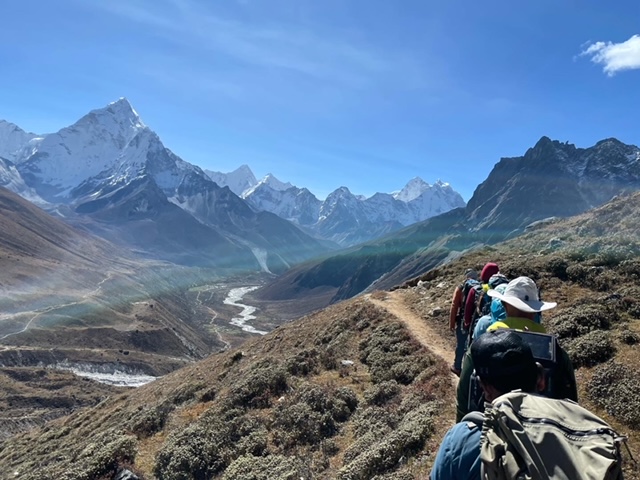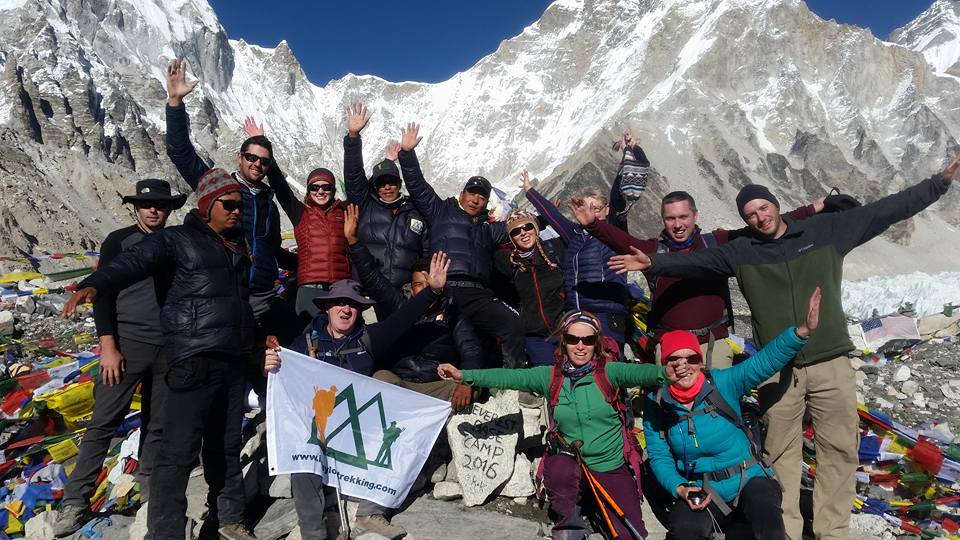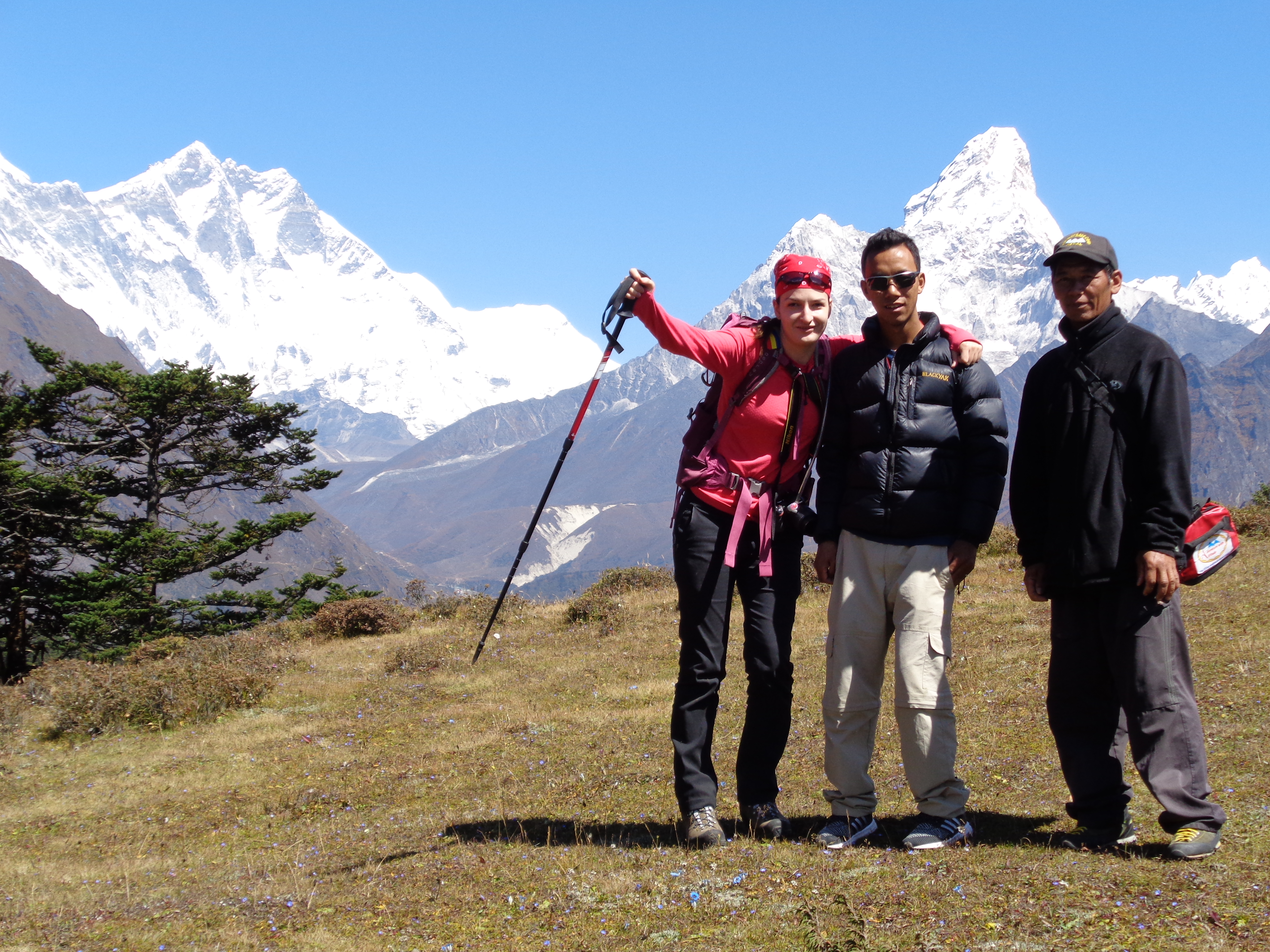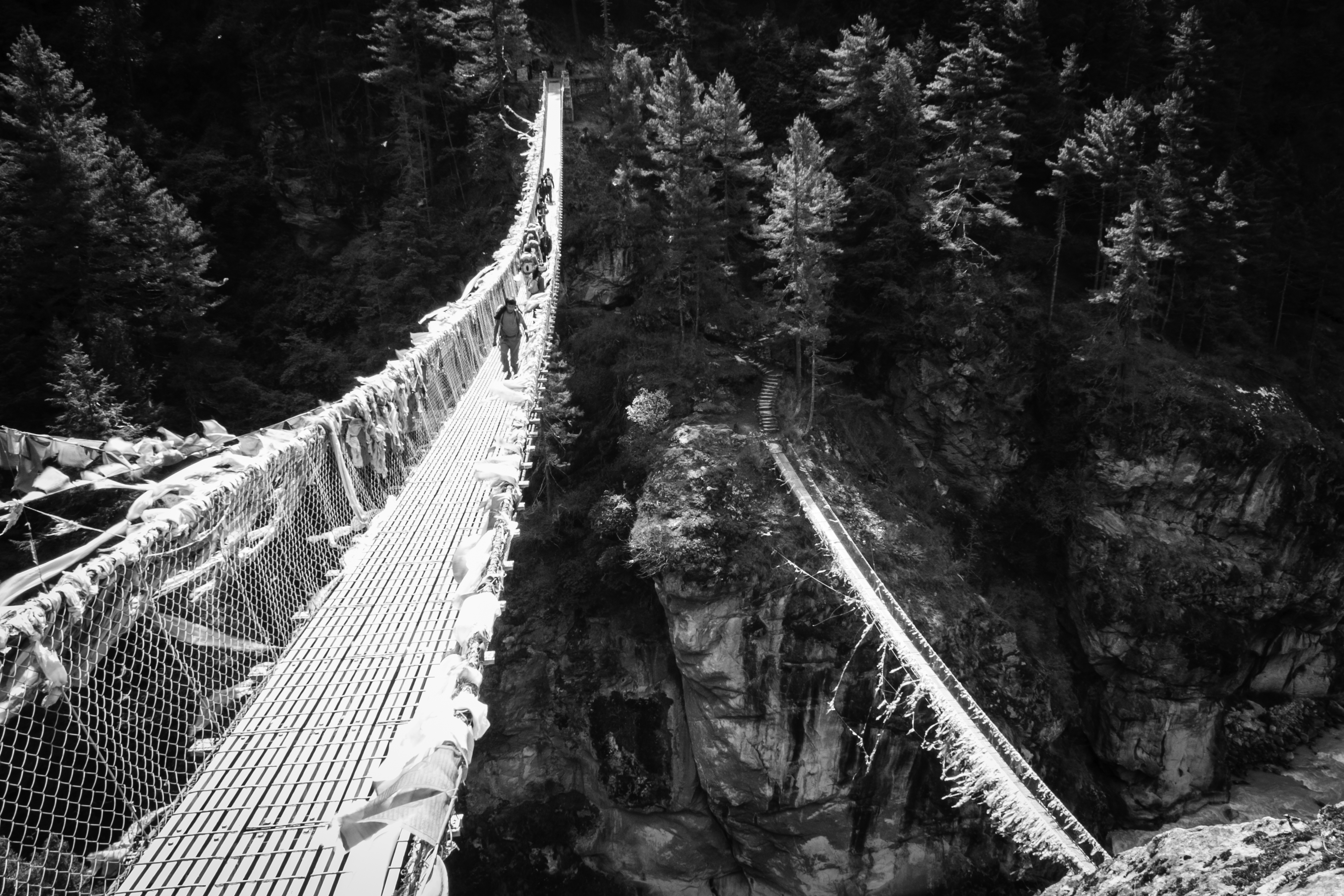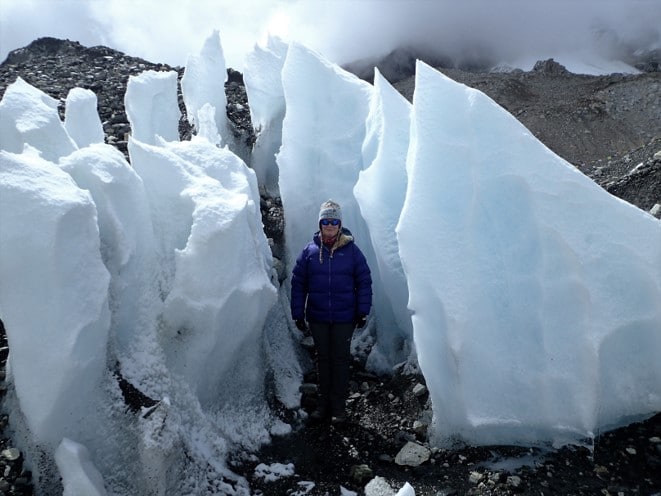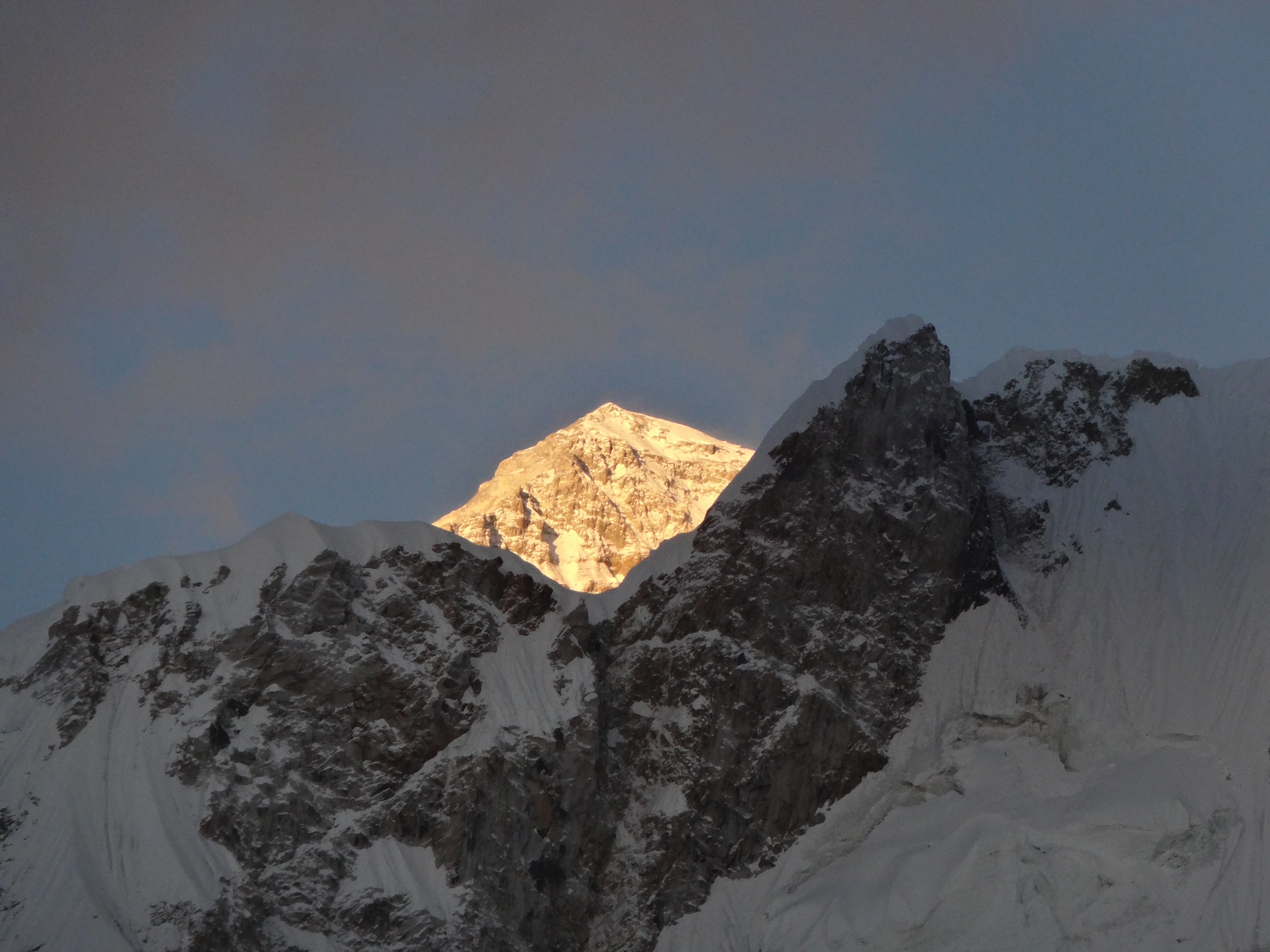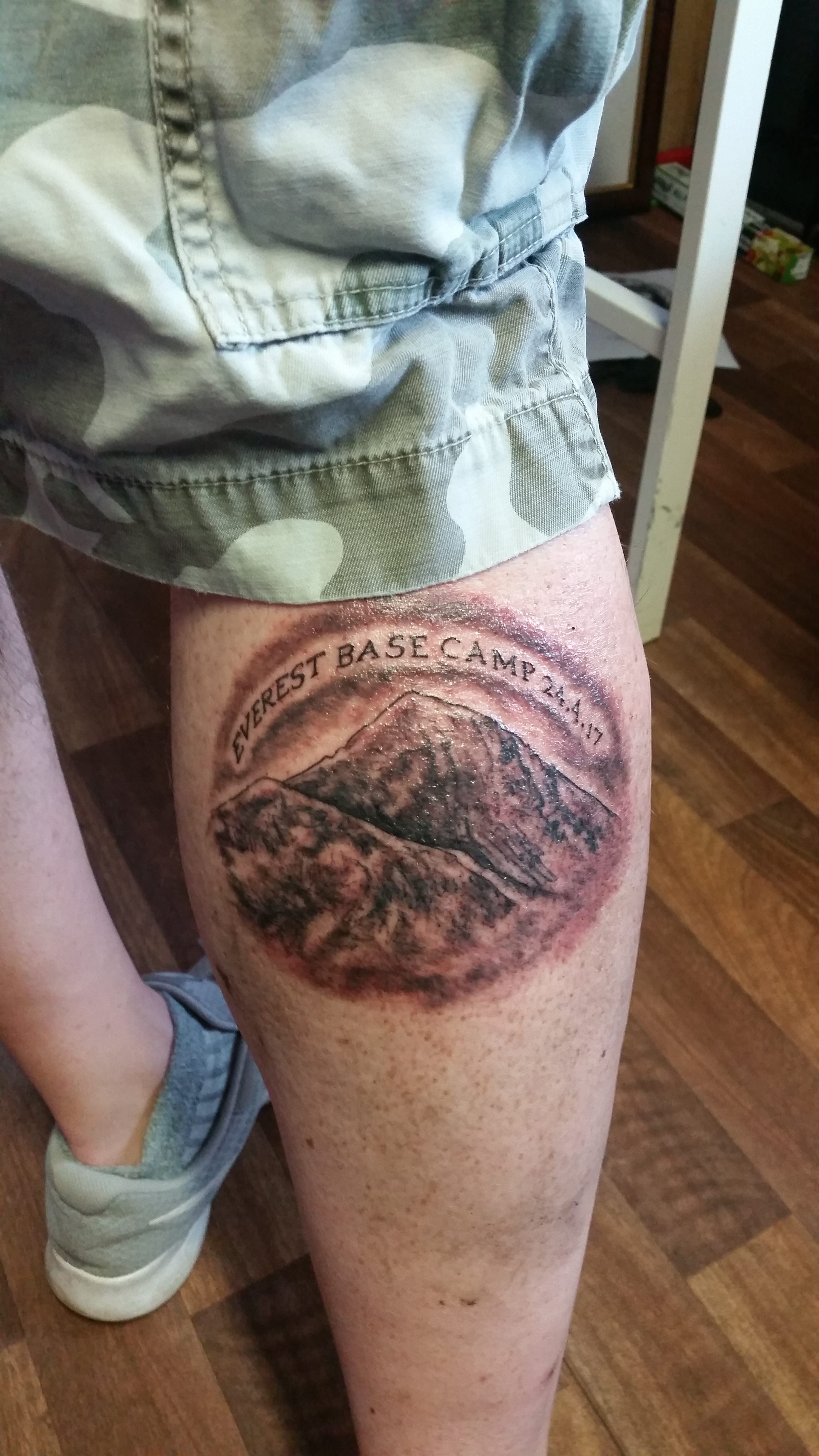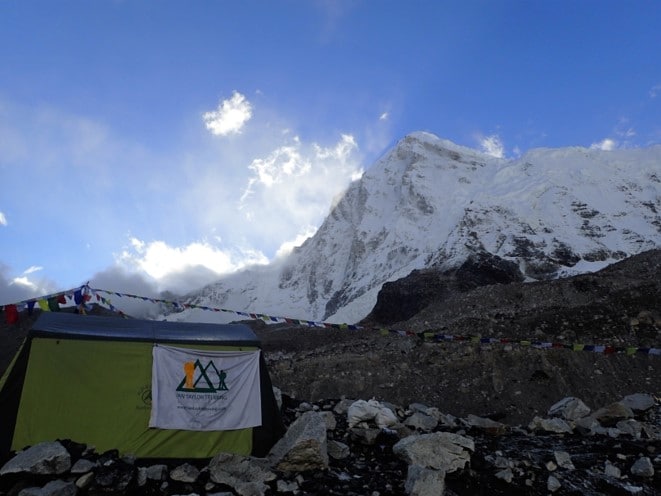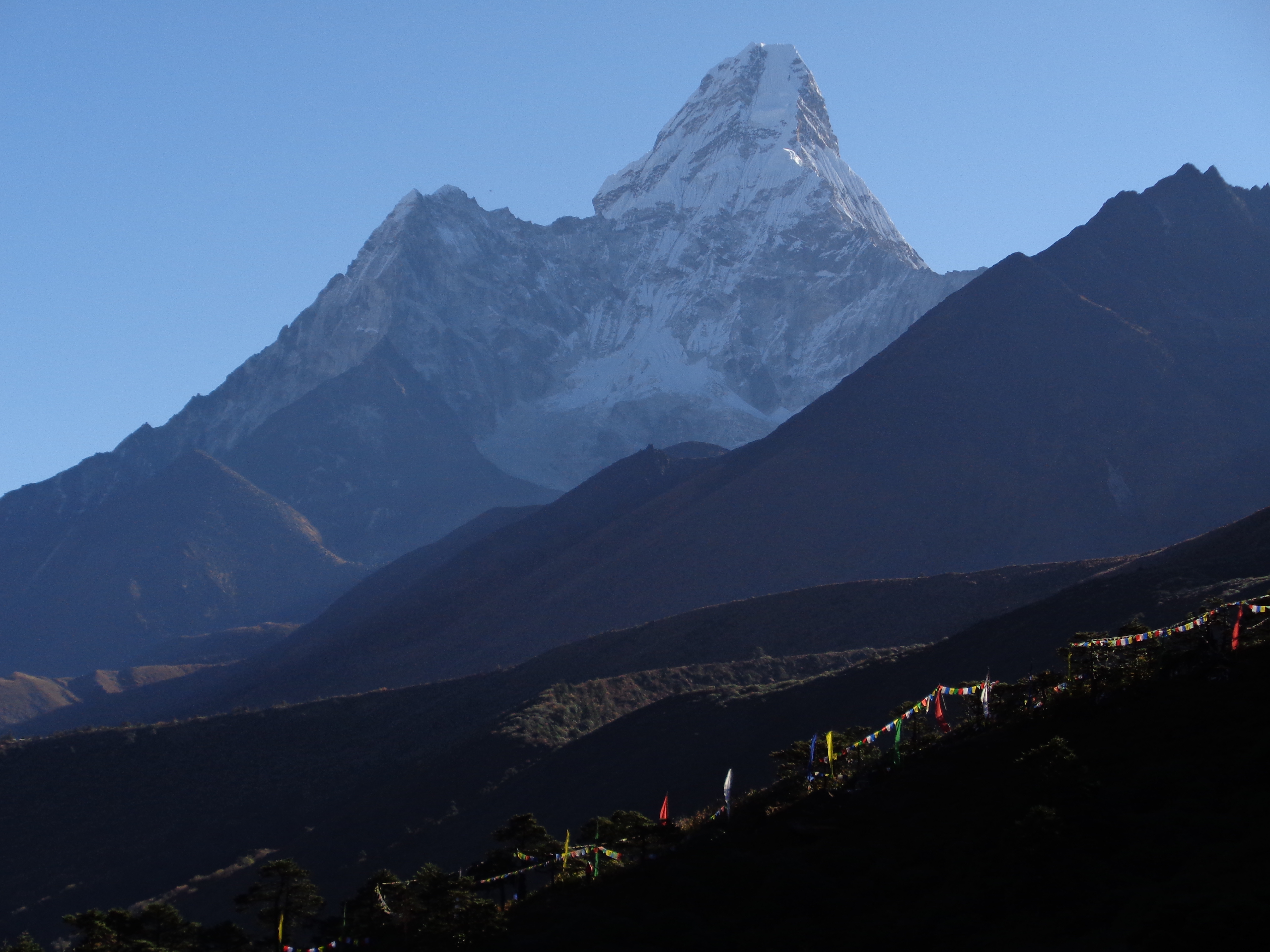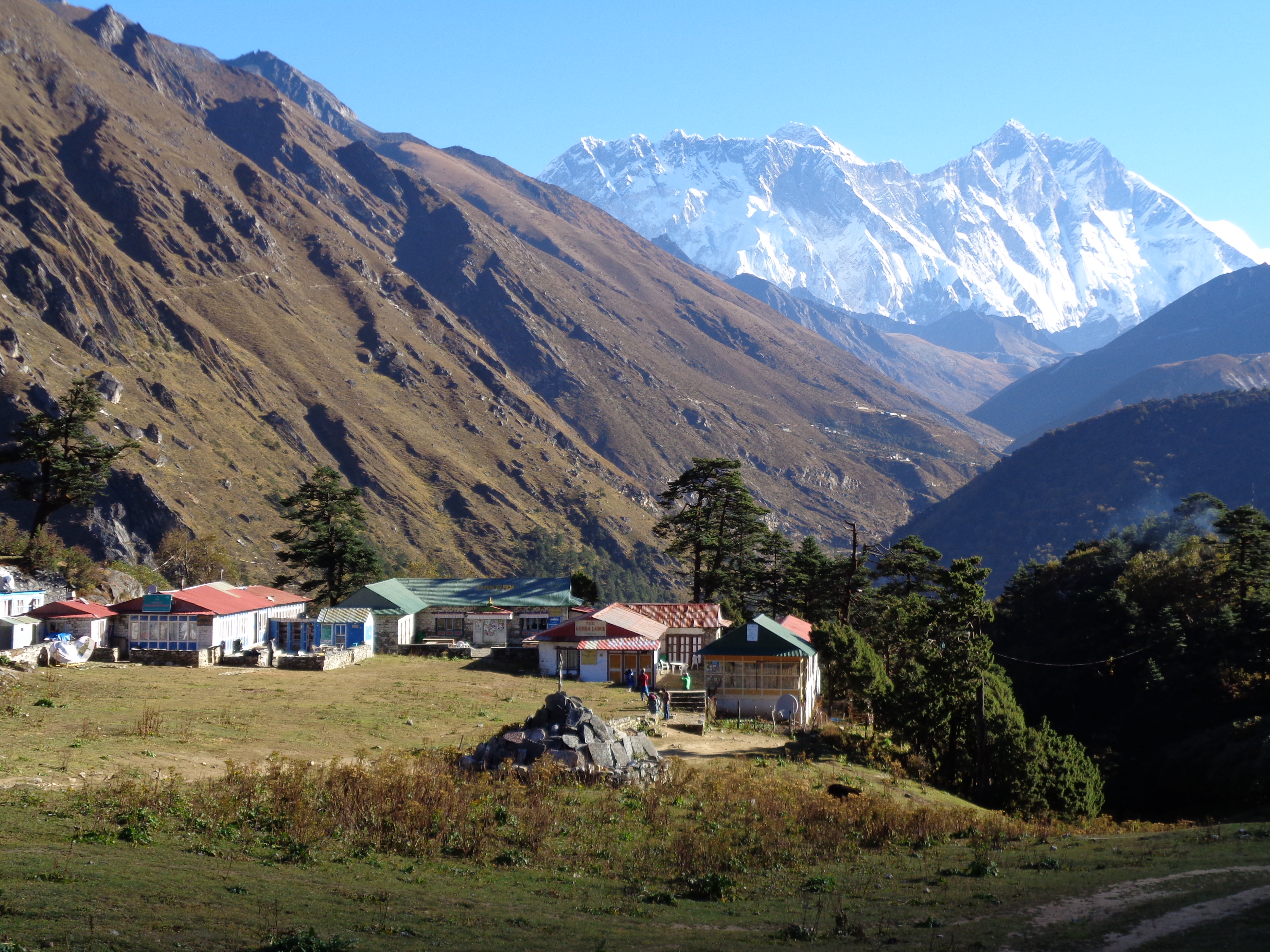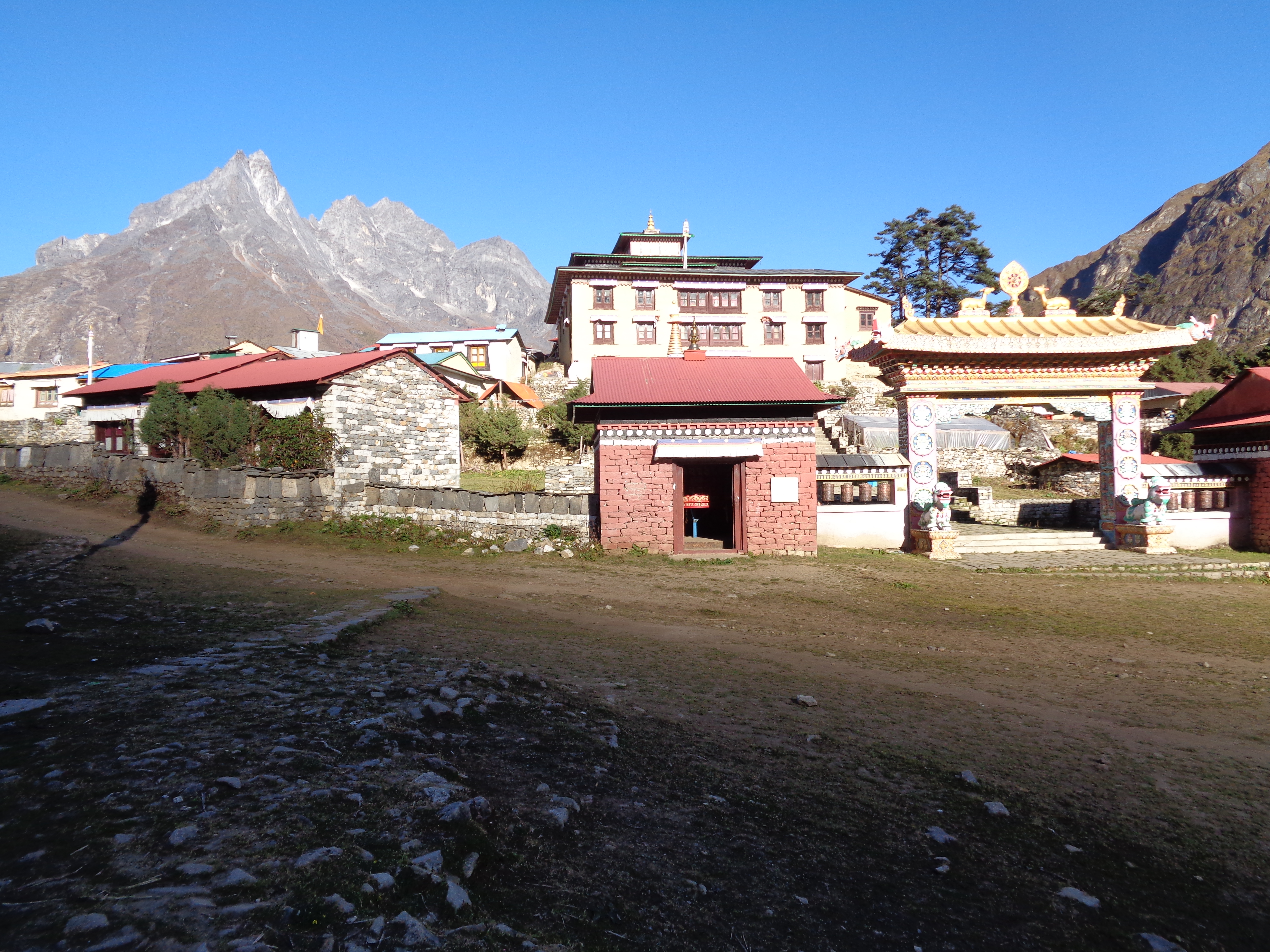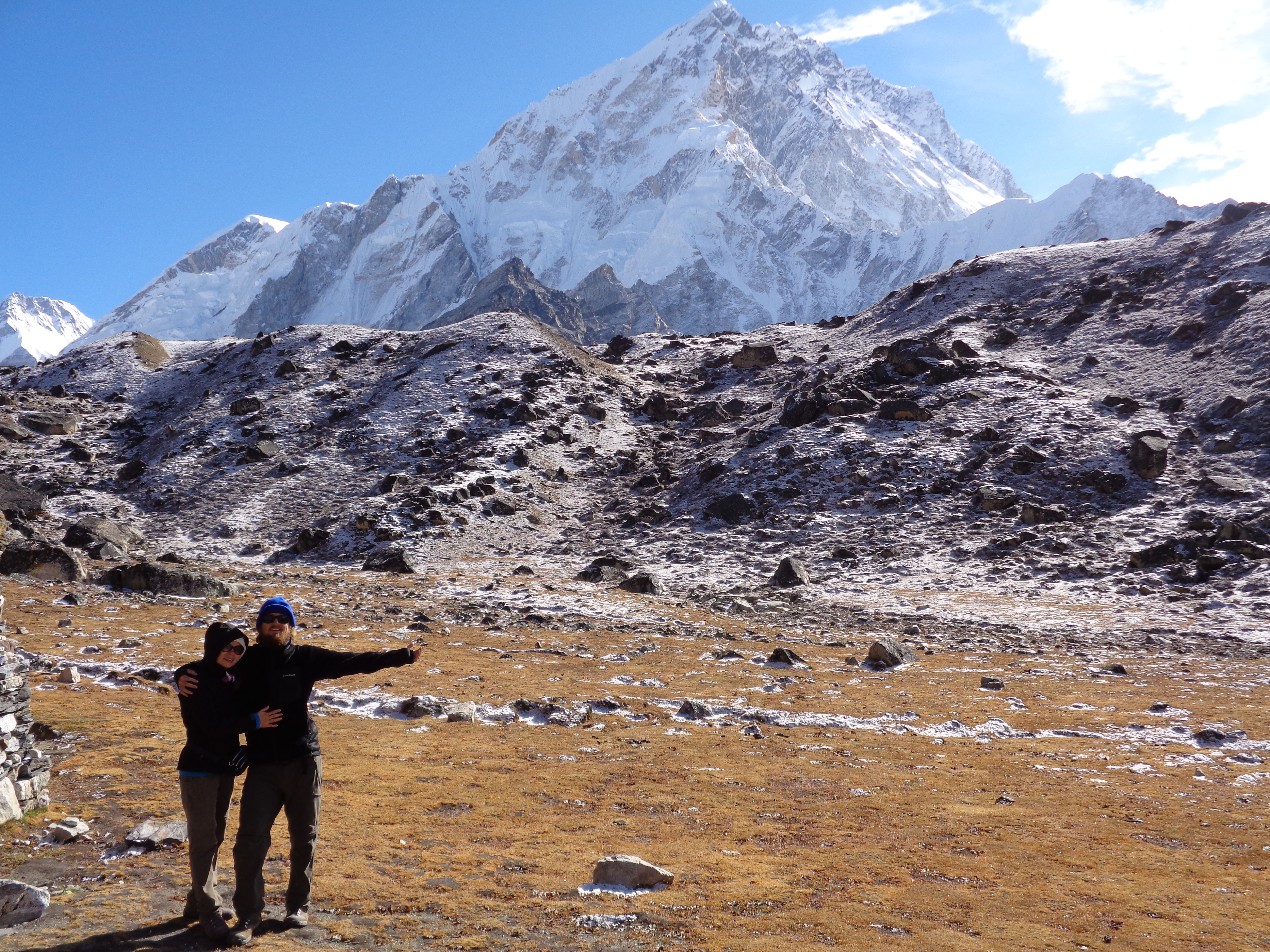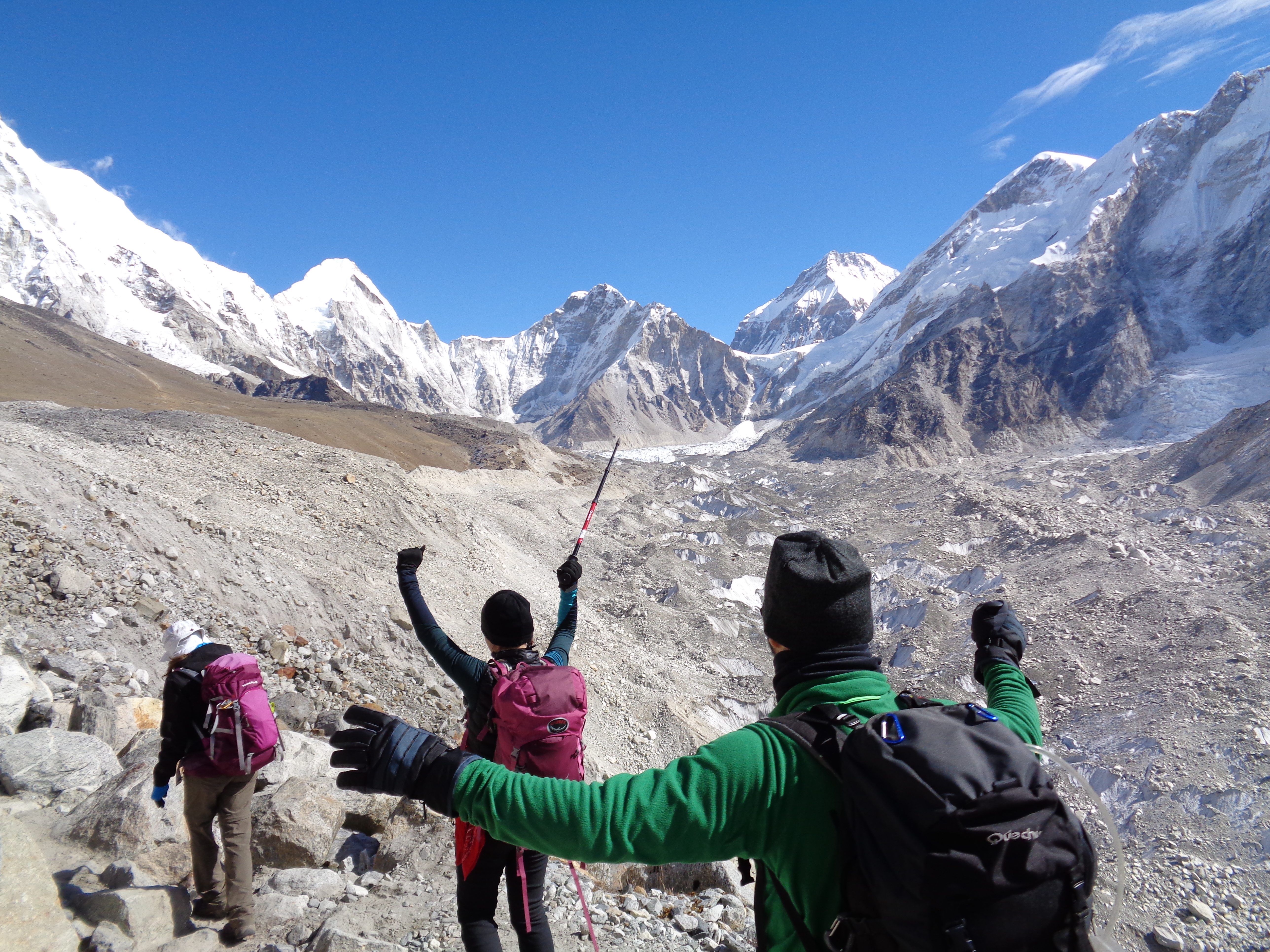Here are the 20 most effective ways to prepare for your Everest Base Camp Trek. If you are considering a trek to Everest Base Camp then this post is for you! I have climbed Mount Everest to the summit, Island Peak 25 times, Mera Peak 6 times, and led over 40+ treks to Everest Base Camp. We also won the International Tourism Award in Nepal in 2019.
The Most Effective Ways to Prepare for Your Everest Base Camp Trek
There is so much information on the internet regarding the trek to Everest Base Camp. Most of that information is useless, why not talk directly to the experts. Gain access to the right information from people who have done the trek numerous times over the last 20 years. We have helped thousands of people trek to and sleep at Everest Base Camp.
We have 3 nights acclimatization in Namche Bazaar on all our Everest treks. This critical acclimatization can make all the difference in your safety and success when trekking to Mount Everest. Follow us on Facebook.
Preparing for your Everest Base Camp Trek
Below you will find the the 20 most effective ways to prepare for your Everest Base Camp Trek in order of importance. These should assist you in your preparation for the trek and in what itinerary you choose to take.
Everyone has different concerns and questions, so feel free at any stage of reading this information to pick the phone or email us with your specific questions. CLICK HERE for further information on explaining how difficult the trek to Everest will be. Also, you can check out our Top 50 Tips for your Everest Base Camp Trek.
1). Maximize Your Acclimatization
Firstly, you need to have the maximum acclimatization built into your itinerary. We highly recommend 3 nights in Namche Bazaar at 3,500m/ 11,500 feet. More time spent at this elevation gives you a safer experience in a low oxygen environment.
This additional time at this critical acclimatization point helps you produce more red blood cells, helping you carry more oxygen and therefore move safely to higher elevations. Not everyone makes it high into the Everest region, so it is CRITICAL to acclimatize well lower down before moving higher.
We have learned from years of experience that spending any less time acclimatizing than what we recommend, and you run the high risk of getting serious AMS (high altitude sickness). Your chances of success go down if you spend less days acclimatizing. Having the best acclimatization should be your number one concern.
2). There is Very Specific Training you Need to be Doing
Specific physical conditioning is very important. You are not running a marathon, you are hiking up and down the side of big mountains on route to Everest. All of this is done with weight (6kg/12lbs) on your back. Some days are longer than others. Read more.
Your endurance training and leg strength must be your top priority. Build from 3 hour to 6 hour hikes with elevation up and down is extremely important. It is not a problem to mix up your training with biking, swimming and weights.
LEARN MORE about training for the downhill. The core training should on hills and stair walking up and down hills. You need to put on a weighted backpack, building up the weight you will carry over months of preparation. Likewise, you need to be training 4 to 5 times a week. We can help.
3). What Sort of Elevation Gains Will You Cover Daily
Understanding the elevation gains on the trail helps you understand the elevation gains you should also be doing in your training. This will help you to build a training plan that works for you.
You need to understand the elevation gains for each day of the trip. Think about this a little more. If you have the daily distances, daily elevation gains on on your Kilimanjaro climb, daily hours hiking per day, therefore, you will be able to build a training plan that works for you.
You will have 30% to 50% less oxygen getting to your muscles at altitude, so the best way to prepare for trekking to Everest Base Camp, is to put your muscles under more pressure at sea level. The best way to do this is keep adding weight into your backpack, even when you are in the gym on each training session. You should increase the weight month on month.
4). Build The Right Training Plan For You
This is just a follow up on number 3. You need to be building up your preparation 3 to 6 months ahead of your climb. If you do not have access to hills and mountains, then you need to focus on how you are going to get the strength and conditioning for the trek to Everest Base Camp.
To develop the right training plan you need to understand the elevation gains, weight you will carry each day, and the daily distances on the trail to Everest Base Camp. Only then than you develop the right training plan based off the above information can you be successful.
Why not get a FREE CONSULTATION today and start getting professional advice from experts. All our office based staff have trekked to Everest Base Camp multiple times.
5). Making Sure You Have The Right Clothing
Having the right sleeping bag, trekking boots and merino layers are very important. Watch our PACKING VIDEO. You will need to be getting as much sleep as possible and you will spend a lot of time in your room resting and sleeping.
Therefore, you want to make sure you are as comfortable as possible. Having a good quality down sleeping bag, that is rated to 0 degrees Fahrenheit (-17 c) could make the difference between sleepless nights and good quality rest.
You need the right layers, down jacket, gloves, trekking boots, backpack and smaller key items. In our 45 page dossier you receive upon signing up for one of our trips, we have an itemized list of kit. Likewise, we are always available to help you make the right choices on clothing and gear for the Everest Trek.
6). You Need Trekking Boots
It is extremely important to buy the right trekking boots early and also that you break them in. There are many high quality boots out there at the moment that would fit the bill for this trek. However, you want to make sure that you get the right boot for your foot!
Our favorite boot at the moment is the La Sportiva Trango GTX trekking boots, for Everest Base Camp Treks. They have a slightly more rigid sole (which we prefer), they are lightweight, warm but breathable, water proof and have a good amount of ankle support.
All of those factors are what you are looking for in a good trekking boot. We would recommend these boots for a trek to Everest Base Camp, in the Alps, Morocco, Inca trail, Kilimanjaro and beyond as a lead into bigger mountains.
7). Fuel Your Trek With The Right Food
On an Ian Taylor Trekking trip to Everest Base Camp, we use the better lodges available. Likewise, the better lodges have the better food. The food in the region can get a bit monotonous, however we aim to offer you the best available in the best lodges.
Watch our FOOD AND ACCOMMODATION VIDEO. Fueling your Everest Base Camp adventure is extremely important. Do not pick the cheap Everest Base Camp Treks as they will land in poor accommodation and therefore run a higher risk of food related problems.
8). Get Your Immunizations Well in Advance
Whether or not you get vaccinations before you travel to Nepal will be a personal choice. However, we do recommend that you follow the advice of your doctor when it comes to vaccinations.
If you sign up to an Ian Taylor Trekking trip, then we will send out our Dossier that will include our complete vaccinations recommendations. Likewise, it will include the recommended medications that we think you should have with you on the trek. Check out our list of recommended vaccinations needed for your Everest Base Camp Trek.
Don’t leave the vaccines to the last minute because many of them require multiple shots or a certain amount of time before you travel.
9). Understand The Terrain You Will Be Walking on
You can watch both our quality Everest Base Camp Trekking video’s, and then watch some raw footage flying into Lukla airport. Watch some footage on the trail between Tengbouche and Dingbouche. Here is some footage from the acclimatization day above Dingbouche. Then, view some footage above Lobuche trekking into Everest Base Camp.
Do let us know and we can share further information with you, helping you prepare for your Everest Base Camp Trek. There are some long days on the way to Everest Base Camp and mostly on the way down. You need to be fully prepared for these long days.
10). Check Out Our Top 50 Tips For Success
We have developed our TOP 50 TIPS over the past fifteen years. These tips have helped us in bringing over 3,600 people to reach Everest Base Camp over the years. These are the tips that work, time and time again. The two main reasons people are not successful reaching Everest Base Camp are
1). Lack of proper acclimatization 2). Lack of proper physical preparation. There are other things that come into play but these are the 2 key factors people miss manage in their decision making and preparation. Come prepared!! Before you trek to Everest Base Camp, here are our TOP TIPS to remember while you are on the trail to Everest Base Camp.
11). Stay Well Hydrated
You need to be drinking water and hydrating prior to the climb. Then, when in Nepal, drinking 4 to 5 liters per day on the trail to Everest. READ MORE about why hydration is critical in low oxygen environments. Making sure you are well hydrated, staying out of the sun and not getting sun burned, are all very important things to remember on this or any high altitude trek.
Our goal each day on the trip is to have one liter of water drank before we start hiking at normally 8 am. While at breakfast, our amazing staff will fill your 2 – 3 liter hydration system (bladder) for you to drink during the morning hike. So, hopefully, by lunch, you should already have three liters of water down in total.
Then, at lunch you can get another liter or two to drink during the afternoon portion of the hike. Hopefully, by five in the evening each day, you should have 4 – 5 liters of water drank. This way, you are not having to drink late into the evening, and then waking up every few hours to use the toilet in the night!
12). Slow and Steady Wins the Race
Getting the pace correct is critical to your success on the Everest Base Camp Trek. Our team knows how to get you successfully into Everest Base Camp and also back down safely. This does not mean you can show up unprepared. You need to come fully trained and prepared for this trek. Trust us, coming down is a lot harder than going up, so leg strength is super important. We can help you get the right training information for your trek to Everest.
Think about physical activity at sea level. You can train hard and then go home rest and 100% oxygen helps your body, muscles recover so you can get up again the next day and train again. On the Everest trek you will have 30 to 50% less oxygen getting to your muscles above 18,000 feet.
You need to minimize damage each day on the trail to Mount Everest. Therefore, the pace we move at and heart rate you maintain on this trek is critical. Let all the other people pass you by. You need to keep as low a heart rate as possible. Minimize the the damage to your muscles on a daily basis. Acclimatize slowly and therefore you give yourself the best chance of making it safety to Everest Base Camp and back to Lukla.
13). Four Guides For Every Group of Ten Trekkers
We have had the same team on the ground for ten years now. Each staff member knows us and we know them. Also, we are adding new staff each year and each of them have to go through the Ian Taylor Trekking training plans. Our staff have been trained over the years and they get continued education and support from us.
We also pay our staff and guides more than most other companies. You can just ask our staff for yourself. This costs more and we only want to run ethical trips that help our staff support their families and get ahead in life. We have hundreds of people contact us monthly looking to join our team in Nepal. Our support for Nepal.
14). Safety Should Be Your Number One Concern
Bring your own pulse oximeter if you like. We will be evaluating you each day, twice a day for heart rate and oxygen levels. On our Ian Taylor Trekking treks and climbs, we test your oxygen saturation in the morning at breakfast and in the evening at dinner time.
We do this so that we can evaluate how you are adapting to the lack of oxygen in your body. Also, this helps to minimize the risk to you in this low oxygen environment. Make sure that you are with a team who will monitor your health daily and therefore give you the best chance of a safe and successful journey.
15). Have Direct Access to Helicopter Evacuation
All our teams carry sat phones on all our trips in case we are out of cell coverage. I highly recommend Global Rescue evacuation coverage for this trip. If there is a concern for your safety, our team will act quickly to get you down to a lower elevation as quickly as possible.
We will be checking your oxygen saturation daily, and watching your progression each day to make sure you are coping. However, if you are not coping with the lack of oxygen in your body, and we see real indicators of AMS (Acute Mountain sickness) and feel you need to be taken off the mountain, we will be there to help.
There are no roads in or out of the region, therefore if you do not have the ability to walk back to Lukla to get the flight out, then a helicopter is the only way out of the region. This is a very important safety factor you need to consider, so make sure you have the right coverage.
16). Small Groups Means Better Safety
Most of our groups are a maximum of 10 people per group and we have 4 guides for 10 people. Having smaller teams aids in safety on your trek to Everest. Most teams that you see going up the trail will only have one guide for a group of 10 people. What that means is if one person is not feeling well or adapting to the lack of oxygen, then they are being dragged up the trail because there is not enough staff.
This is a very bad practice that leads to people being put in very dangerous situations and, ultimately, having to be helicoptered out of the region. We do not want to see this happening on our trips. We have plenty of staff so that if one person needs to turn around, it does not affect the entire group.
Our guides and support staff leading you know the Ian Taylor Trekking way. This year we had just under 300 people trekking in the Everest Region and 272 people were successful in reaching their goal and coming down safety. You need to have these safety measures in place, and therefore minimize the risk you are taking in this extremely low oxygen environment.
17). Pick the Right Month to Trek to Everest Base Camp
Also picking the right time to visit is important. Smaller teams means you will have better access to our staff. Likewise, our world class guides can get you know you better and spot altitude related issues a lot quicker. Our guides will be able to spot subtle changes in your behavior and be able to react quickly.
Smaller groups means are more relaxed, safer and more enjoyable experience for you on the trail to Everest Base Camp. We have found a maximum of 10 people makes a more successful and more enjoyable and positive overall experience for each team member.
There are two distinct trekking seasons; pre and post monsoon. The Pre Monsoon season runs from March – May and then the post monsoon season is from September – December. The busiest months on the trail are normally April, May and October. If you want to see the region with less people, then why not choose March, September, November or December.
18). Seek out Professional Advice
Having access to people who have climbed Mount Everest and made this journey numerous times, can make all the difference. Ian Taylor Trekking have helped over 3,600 people reach Everest Base Camp over the years.
When you sign up to an Ian Taylor Trekking team you will have access to Ian Taylor himself as well as other staff 5 days a week. We will answer all your questions, help you get excellent training advice and are ready to assist you with professional, first hand, information which can mean the difference between success and failure.
19). Deep Breathing On The Trail Is So Important
Practice the right breathing techniques needed for high altitude trekking. This is easier shown than trying to write about it. In low oxygen environments you need to flood your body with oxygen. This means deep breaths in through your nose and fast out through you mouth. Think about it like this. Your body and muscles are being starved of oxygen on the trek to Everest, therefore you need to force oxygen into your body.
You do not need to be doing this every step and it will vary from the first day to the highest point on the trail. This technique requires focus so it is good to practice in your training and while you are on the mountain. Trust us, you will need this technique throughout your trek to make sure you are giving your brain, lungs, heart and body enough oxygen to reach Everest Base Camp and Kala Patthar, and to get back safely.
20). Trek With Professionals
We can help you get all the information you need for your Everest Base Camp trekking adventure. Ian has led over 40+ Everest Base Camp Treks and all of our staff have been on the trek multiple times. Therefore, we have the correct information for your trek.
Ian Taylor Trekking have helped over 3,600 people reach Everest Base Camp and sleep at Everest Base Camp. We have the team, service, set up and only run quality, and safe, Everest Base Camp Treks. Drop us an E-MAIL TODAY, pick up the phone and we can help you get the best information in preparation for your Everest Base Camp Trek. Follow us on Instagram.

